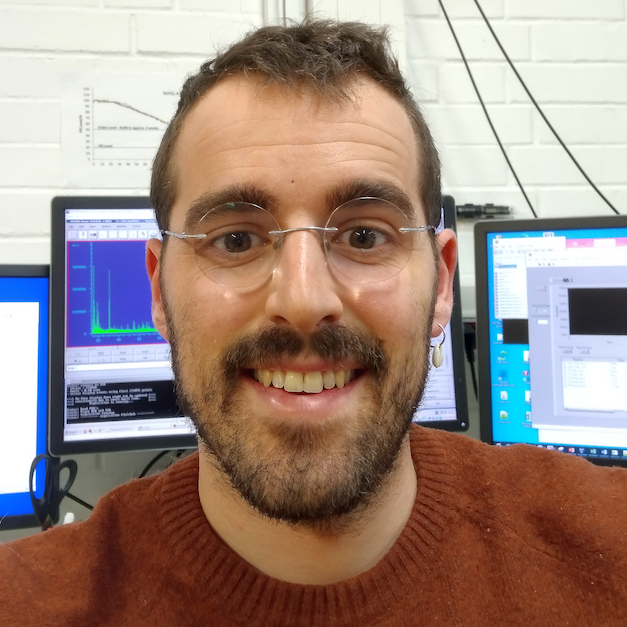
Marcos Juanes San José
| AREA | RESEARCH GROUP | INSTITUTE |
|---|---|---|
| Physical-Chemistry | Chemical Physics (University of Innsbruck) Spectroscopy of Plasmas and Supersonic Jets (University of Valladolid) |
- Institute for Ion Physics and Applied Physics (UIBK) - CINQUIMA Institute (UVa) |
Back to 2016, I started my research career in science in Alberto Lesarri's group (CINQUIMA Research Institute of the UVa). Subsequently, I was hired as a predoctoral researcher at the University of Valladolid (UVa) from April 2017 to September 2021 thanks to an FPI research grant (MINECO-FEDER), being an active member of the Plasma and Supersonic Jet Spectroscopy Group (GEPCS) and affiliated, since 2018, with the RSEF (Real Sociedad Española de la Física). During my pre-doctoral stage, I enjoyed research stays in internationally recognized research centers such as at the Gottfried-Wilhelm-Leibniz Universität Hannover (Hannover) and at the I. Physikalisches Institut Universität zu Köln (Cologne), both in Germany.
In September 2021, I proudly completed my Ph.D. in Physics at the UVa, being recognized with an Extraordinary Ph.D Award for Doctoral Thesis carried out at the University of Valladolid. Since January 2022, and thanks to a Margarita Salas (EU next generation) postdoctoral fellowship, I moved to the University of Innsbruck (Austria) and started working with Prof. Dr. Martin Beyer as a part of the Chemical Physics group at the Institute of Ion Physics and Applied Physics. This opportunity abroad gave me the chance to explore different lines of research in the field spectroscopy and allowed me to improve my personal skills to handle different experimental setups in a consolidated international scientific group in the area, as well as complement my knowledge of quantum chemical calculations in association with Ass. Prof Dr. Milan Ončak.
My predoctoral research has been carried done in one of the most remarkable international “hot-spot” regarding microwave region studies in gas phase as a member of Alberto Lesarri´s of Spectroscopy of Plasmas and Supersonic Jets Group (UVa). In there, I set my investigation using two spectroscopic techniques, including a Balle-Flygare Fourier-Transform Microwave (FTMW) spectrometer in the 8-20 GHz frequency range, and a broadband Chirped-Pulse Fourier Transform Microwave (CP-FTMW) spectrometer covering the 2-8GHz spectral range. These techniques, together with quantum chemical calculations, were the main tools to develop my PhD research in microwave spectroscopy acquiring experience with experimental studies on neutral molecular systems and intermolecular clusters in the gas phase. Within the research topics can be included the structural, energetic and physical characterization of molecular complexation and the study of hydrogen bonds (both inter- and intramolecular) using rotational spectroscopy in the molecular ground state. Specifically, the study of intermolecular interactions involved in the formation of neutral molecular aggregates containing oxygen, sulfur, nitrogen or selenium in the key role, both dimers and microsolvation products.
In January 2022 I moved to Austria to be a part of the Chemical Physics group at the Institute of Ion Physics and Applied Physics at the University of Innsbruck leaded by Prof. Dr. Martin K. Beyer and in close collaboration with Ass. Prof Dr. Milan Ončak. The main idea of the research project is to extend previous lines of research on neutral systems to the analysis of metal (concretely iron compounds) oxide/hydroxide ions and their solvation products, combining mass spectrometry, laser vaporization and spectroscopic techniques. The experimental setups include Fourier transform ion cyclotron resonance (FT-ICR) mass spectrometer together with a tunable UV/VIS/NIR optical-parametric oscillator (OPO) covering 192–2600 nm and two tunable IR OPOs, which cover 2500–12000 nm, allowing to perform gap-free spectroscopy of size-selected clusters in a broad spectral region with high sensitivity.

